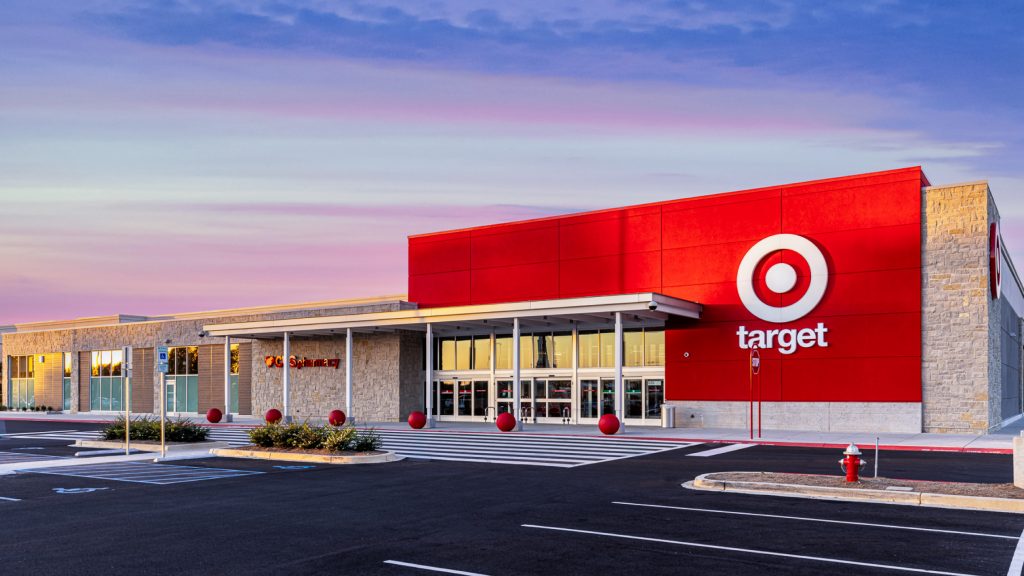Your cart is currently empty!

Introduction
In the crowded landscape of American retail, few names resonate as strongly as Target. Known for its iconic red bullseye logo, sleek store layouts, and a reputation for balancing affordability with style, Target has evolved from a modest regional chain into a retail giant influencing trends nationwide. But the story of Target is not simply one of expansion; it is a story of vision, resilience, and strategic ingenuity. This is a journey from a struggling past to an inspiring modern-day titan, illustrating the power of thoughtful branding, consumer insight, and adaptive leadership.
Early Beginnings: A Modest Start
Target’s origins date back to 1902, when George Dayton opened a dry goods store in Minneapolis, Minnesota. Originally known as the Dayton Company, the enterprise focused on delivering quality merchandise at fair prices to the local community. Over the decades, the Dayton Company expanded, adding department stores that reflected the evolving tastes of post-war America. By the mid-20th century, the Dayton brand was a household name in the Midwest, setting the stage for a bold, new experiment in retailing.
The concept for Target was revolutionary at the time. George Dayton’s grandson, Douglas Dayton, envisioned a store that combined the convenience of a discount retailer with the appeal of high-end design. In 1962, the first Target store opened in Roseville, Minnesota, introducing a bright, modern shopping environment that contrasted sharply with the dimly lit, cluttered discount stores of the era. The focus on style, value, and customer experience would become Target’s signature formula.
The Rise of the Bullseye Brand
Throughout the 1970s and 1980s, Target expanded steadily, introducing innovations that would shape the retail industry. Among the most notable was the creation of its distinctive bullseye logo, a symbol of precision, focus, and brand identity. This visual mark quickly became synonymous with reliability, affordability, and quality—qualities that drew customers in an increasingly competitive market.
Target also distinguished itself through a commitment to design. Unlike other discount retailers, which often prioritized low prices at the expense of aesthetics, Target partnered with designers to create products that were both stylish and accessible. This strategy not only elevated the brand but also redefined the expectations of what a discount retailer could offer.
Strategic Expansion and Market Positioning
The late 20th century was a period of ambitious growth for Target. The company expanded beyond the Midwest, entering markets across the United States. A critical factor in this expansion was Target’s ability to balance mass appeal with a curated shopping experience. Whereas competitors like Walmart focused heavily on low-cost, high-volume strategies, Target carved out a niche by appealing to middle-class families who valued quality, design, and convenience.
Target’s private-label brands played a crucial role in differentiating the retailer from its competitors. Brands such as Archer Farms, Up & Up, and Threshold not only provided higher margins but also reinforced Target’s commitment to stylish, affordable, and practical products. By leveraging private labels, Target maintained control over product quality while cultivating a loyal customer base.
Adapting to Changing Consumer Trends
In the early 2000s, Target faced significant challenges, including the rise of e-commerce and shifting consumer expectations. Recognizing the importance of digital integration, Target invested heavily in online retailing, launching a robust e-commerce platform that mirrored the brand’s in-store appeal. By offering a seamless shopping experience across digital and physical channels, Target positioned itself as a forward-thinking, customer-centric retailer.
Additionally, Target embraced sustainability and corporate responsibility, responding to growing consumer demand for ethical practices. Initiatives like the Sustainable Product Index, renewable energy adoption, and community engagement programs reinforced Target’s image as a socially conscious company, appealing to environmentally and socially aware shoppers.
Collaborations and Pop Culture Influence
One of Target’s most notable strategies in recent decades has been its collaborations with high-profile designers and brands. Partnerships with fashion designers, home decor specialists, and lifestyle brands created limited-edition collections that drove consumer excitement and brand loyalty. These collaborations transformed Target into a cultural phenomenon, blending affordability with trend-setting style.
From celebrity chef partnerships to designer fashion lines, Target became more than a retailer; it became a tastemaker. The company’s ability to bridge mainstream accessibility with aspirational products has cemented its position as a leader in both retail innovation and popular culture.
Modern Innovations and Digital Transformation
Today, Target continues to evolve in response to technological advancements and consumer expectations. Investments in supply chain optimization, same-day delivery, and omnichannel retailing have strengthened Target’s market position. The company’s adoption of data analytics and AI-driven insights enables personalized marketing, predictive inventory management, and enhanced customer experience.
Furthermore, Target has embraced modern store concepts, incorporating experiential elements, interactive displays, and tech-enabled shopping solutions. These innovations ensure that Target remains competitive in a landscape increasingly dominated by e-commerce giants, while still maintaining the tactile, in-person experience that shoppers value.
Resilience in Times of Challenge
Target’s journey has not been without setbacks. From economic recessions to competitive pressures and logistical challenges, the company has consistently demonstrated resilience. Strategic pivots, innovative marketing campaigns, and a commitment to customer-centric values have allowed Target to thrive where others have faltered. Its ability to learn from missteps, adapt to new market realities, and anticipate consumer needs exemplifies the qualities of a truly enduring brand.
Looking Forward: The Future of Target
As Target approaches its seventh decade in retail, its vision remains clear: to combine affordability, style, and innovation in ways that resonate with modern consumers. The company’s ongoing investments in technology, sustainability, and experiential retail suggest a future where Target is not merely a store, but a lifestyle destination.
Target’s story—from a struggling regional chain to an iconic, innovative, and culturally influential retailer—is a testament to strategic foresight, adaptive leadership, and unwavering dedication to the customer experience. The company’s journey inspires businesses and consumers alike, proving that with vision, innovation, and resilience, a brand can not only survive but flourish in an ever-changing marketplace.
Do you want me to do that next?

Leave a Reply